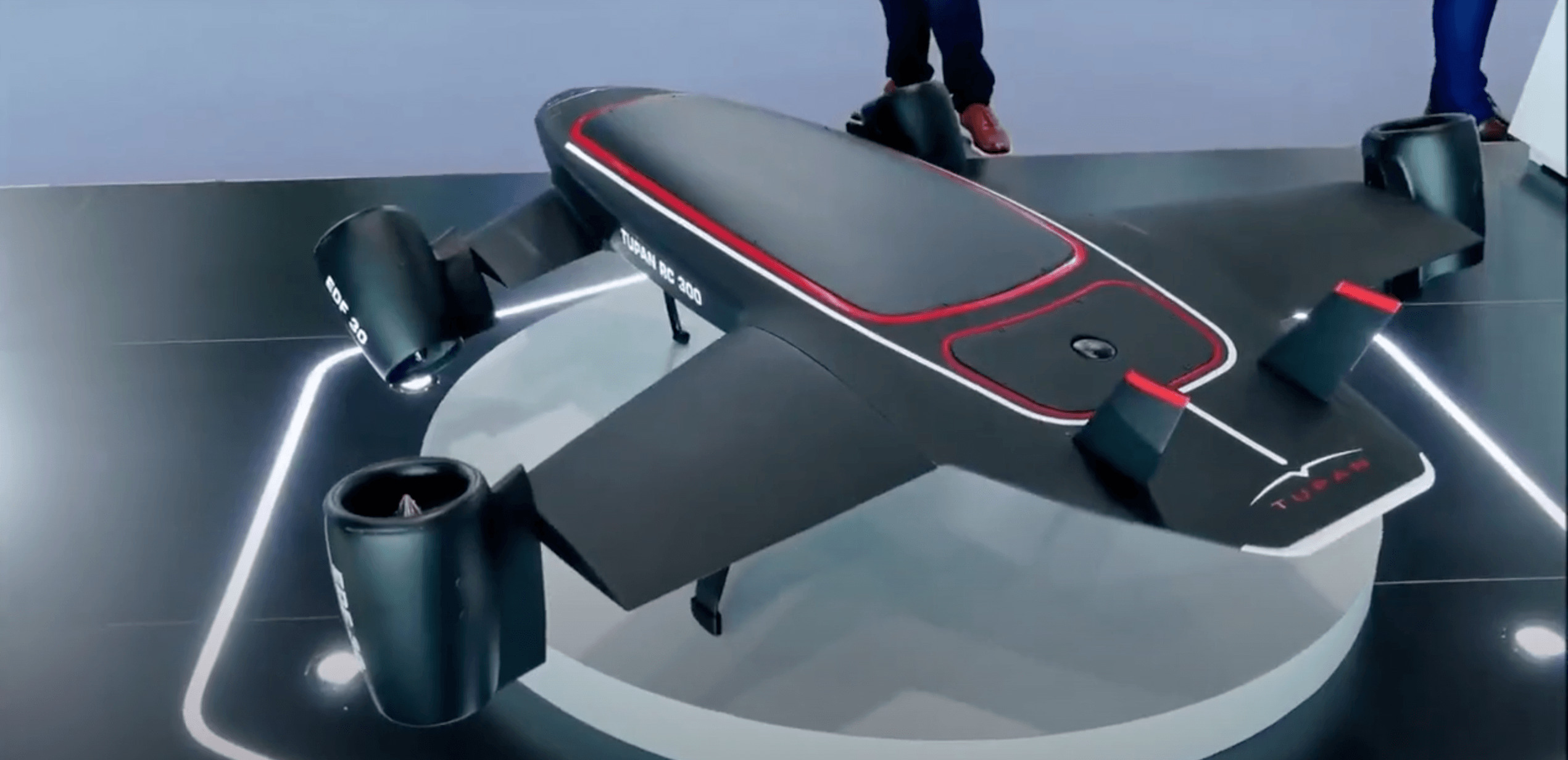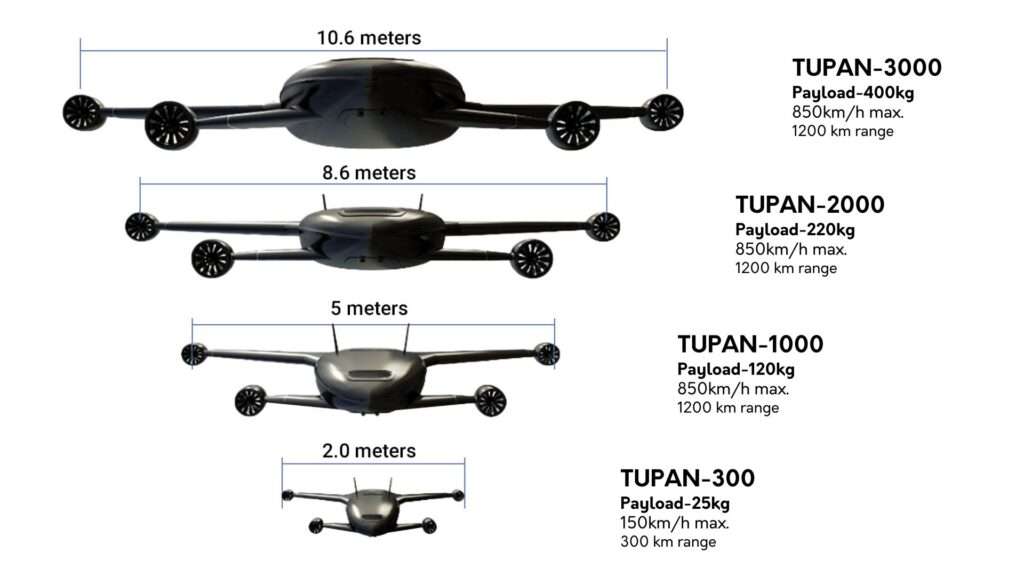
Patricia Marins
The latest iteration of TUPAN drones made their debut at IDEX2023. This cutting-edge technology stems from a collaborative effort between the Turbomachine and SIATT companies, both of which have established partnerships with the EDGE group.
The TUPAN drone family embraces high-speed, vertical takeoff and landing (HSVTOL) capabilities, merging electric propulsion with diminutive Jet-A fueled turbine engines. This innovative fusion has given rise to a lineup of compact yet high-performing drones, boasting remarkable velocity, payload capacity, and redundancy.

Among these, the RC 300 model stands out, capable of transporting a 2.5 kg payload at speeds reaching 150 km/h. Meanwhile, the larger variants – Tupan-1000, 2000, and 3000 – are anticipated to bear payloads of up to 600 kg, soar at speeds of 850 km/h, and cover distances as far as 1,200 km. By adopting a novel turbofan engine, the TUPAN can even achieve velocities of up to 1,000 km/h. Notably, the TUPAN 3000 military version exhibits potential for carrying smart munitions and other armaments.
These HSVTOL drones, typified by the TUPAN, harbor inherent dangers due to their unique attributes that render them elusive and exceptionally maneuverable. Common military radar systems typically require a minimum speed threshold of approximately 15m/s for detection. In direct contrast, these drones can manipulate engine positioning, enabling them to elude such radars. In mere moments, they can transition into attack mode, accelerating from 500 to 1,000 km/h.

Considering their advanced technological underpinnings and potential for covert operations, the global dissemination of these drones, jointly developed by SIATT and EDGE, seems highly plausible.
Recent times have witnessed significant cooperation between the Brazilian and emerging Arab arms industries. This alliance promises to usher in substantial shifts in the landscape of global arms trade, whereby traditional importers evolve into exporters.

Be the first to comment